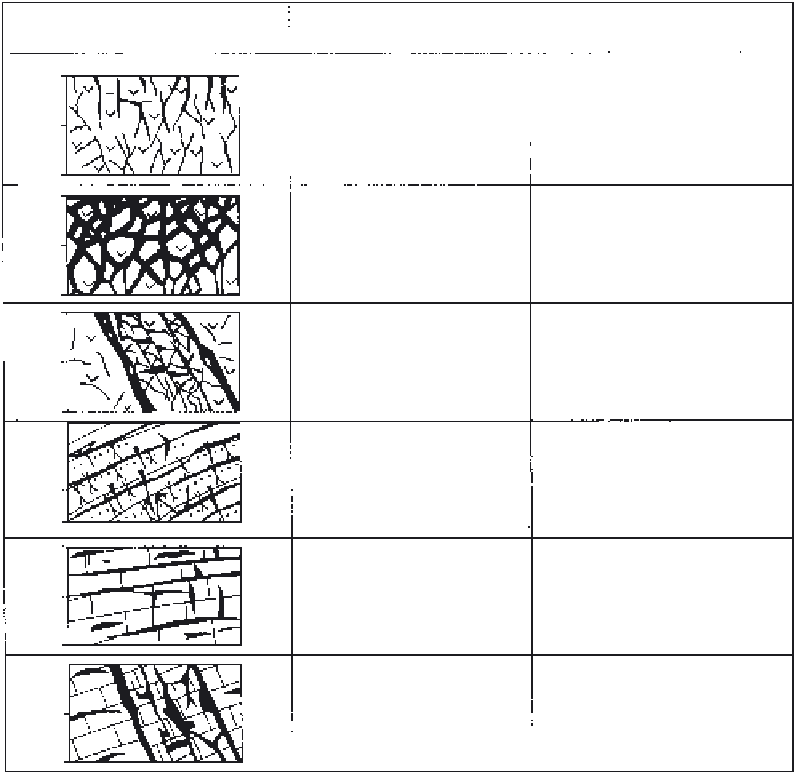Geology Reference
In-Depth Information
Rock type
Cryogenic texture
Name
m
0
Fissured
All rocks
1
2
0
1
Fissured-widened
All rocks
2
0
All rocks with joints,
fissures, bedding
planes and faults
Fissured-veiny
1
2
0
All sedimentary rocks
and metamorphic deposits
Stratal-fissured
1
2
0
Carbonate rocks
1
Stratal-fissured-karst
2
0
Carbonate rocks with
joints and fissures
1
Karst-fissured-vein
2
Figure 7.5.
Cryogenic textures associated with solid and semi-solid rocks, according to
Kudryavtsev (1979). From Melnikov and Spesivtsev (2000). Reproduced by permission of SB RAS
Publishing House.
ground-ice amounts (Dredge et al., 1999; Hodgson and Nixon, 1998; Rampton, 1982, 1988;
St-Onge and McMartin, 1995). Second, if a weathered mantle overlies bedrock the weath-
ered mantle commonly possesses higher ice content than the unweathered bedrock from
which it is derived (French et al., 1986; Stangl et al., 1982). Third, marine sediments that
lie below the maximum level of marine submergence are usually more fi ne-grained than
sediments that lie above the marine limit (Pollard, 2000b) and, as a result, commonly
possess higher ice contents. These generalizations can be applied to most other permafrost
areas, including Alaska, Scandinavia, and northern Russia.
In spite of the previous comments, it should not be assumed that coarse-grained uncon-
solidated sediments are always ice-poor. An increasing body of evidence suggests that
high ice contents and bodies of ice may occur in a variety of granular materials (Dallimore
and Wolfe, 1988; Gowan and Dallimore, 1990; Hyatt, 1998). Pore-water expulsion during
freezing in a closed system, the burial of glacier ice, and the injection of groundwater

